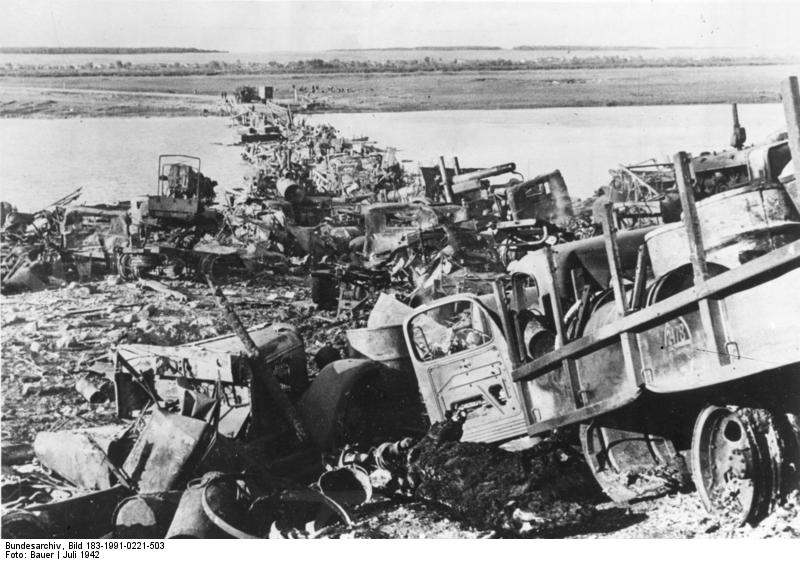The online database of Hungarian soldiers who died a heroic death, were wounded and were taken prisoner of war in the Second World War has been launched. The iivh-katonahoseink.militaria.hu , was presented on Tuesday in Budapest, at the Military History Institute and Museum of the Ministry of Defense (HM).
Szilárd Németh, the Parliamentary State Secretary of the Ministry of Home Affairs, emphasized: "Knowing and processing our historical past is essential for creating a successful future for the nation. The heroes of the past set an example and guide the heroes of today, the soldiers of the Hungarian Armed Forces; and for all of us".
He reminded me: the Military Heroes Memorial Program launched by the Military History Institute and Museum in 2012 organizes the names and related information of Hungarian soldiers who died heroically, were wounded, were taken prisoner of war, died in peacetime, while performing their duties, during peacekeeping operations, and the related information for almost two centuries. makes it available (and therefore researchable) to the general public.
As a result of the program, in 2019, the processed data set of about one and a half million Hungarian soldiers from the First World War was presented. Last October, the database of soldiers who died during the 1956 revolution and war of independence also received an online interface on the occasion of the 65th anniversary. www.katonakagulagon.hu was also completed in 2017 , which contains the data of around 66,000 Hungarian soldiers who died in prisoner-of-war camps - the state secretary explained.
Szilárd Németh emphasized: the value and significance of the World War II data set that has just been completed is that the more precise circumstances of 241,087 of these long-known losses have become known. All of this is also important because the losses of the war affected almost every Hungarian family, and in many cases the memories and stories related to it are still waiting to be processed.
The state secretary called it a patriotic duty to search for and name military heroes, to give them their rightful place in Hungarian history and to set them as examples for future generations.
He recalled: When Prime Minister Viktor Orbán appointed Romulus Ruszin-Szendi as commander of the Hungarian Armed Forces, he set him the task of preserving the integrity of the army, its disciplined internal order and the ideal of the Hungarian soldier, as well as integrating the Hungarian Armed Forces into society, winning over tens of thousands of young people and preparing them for for the defense of the homeland and respect for military ideals. Szilárd Németh said: he is convinced that the implementation of this "prime minister's order" starts with the military memory policy.
He expressed his gratitude to the staff of the Military History Institute and Museum: "we proudly honor and remember the Hungarian military heroes with grace and in a dignified manner."
"Go, Hungarian national defenders!" - Szilárd Németh concluded his speech, who then tried the website and searched for the data of his uncle, Mihály Németh, who died in the Second World War.
Vilmos Kovács, the commander of the museum, said: they fulfill their official and moral duty by processing and presenting the losses in the history of the Hungarian Armed Forces with scientific sophistication. They owe it to society and families to let them know what sacrifices their soldiers and relatives made for the country.
The commander announced that, according to the plans, the database of fallen hero soldiers of the 1848/49 War of Independence, the Hungarian People's Army, and the Hungarian National Army after 1991 will also be completed by 2023, the 175th anniversary of the existence of the Hungarian Armed Forces.
All completed and upcoming databases are available or will be available on katonahoseink.militaria.hu - said Vilmos Kovács.
István Ravasz, the museum's historian, presented the World War II loss database in detail. He said: the terms "killed" and "wounded" refer specifically to what happened during the battle, while "dead" and "injured" refer to what happened in connection with the war, but not during the battle. The first four digits of the 10-digit identity number indicate the registry district, so the place of birth of the soldier can be deduced from that, he explained.
The loss data sets made available now come from three main sources: from the register based on the loss documents of the 22nd and then 8th Departments of the Ministry of Defense, from the documents of the legal department of the Ministry of Defense related to the search for soldiers, and from the hospital death registers. He also drew attention to the fact that from the fall of 1944, the loss registration system of the Royal Hungarian Army was gradually discontinued, so that there were hardly any data left about several months of loss cases.
István Ravasz also touched on the fact that the databases - including hadisir.hu - complement each other, so it is worth looking at them together. As before, they will continue to count on the help of relatives and relatives to clarify the data with the help of their authentic contemporary documents.
In the background material of the Institute of Military History and Museum, it was written: the number of Hungarian soldiers who died a heroic death in World War II (according to current knowledge) may be between 120,000 and 140,000, including soldiers who died in captivity, more than 200,000. The number of wounded, who could no longer fight, was between 90,000 and 100,000, while the number of missing could be between 120,000 and 130,000. The number of prisoners of war, including Eastern and Western prisoners of war, was approximately between 500,000 and 700,000.
MTI
Photo: Don bend / Bundesarchiv / Wikipedia













